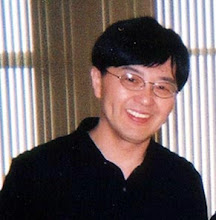Friday, June 29, 2012
Summer 2011 in Japan
Almost every year I spend early June in Japan. Because I recently published a book entitled “Telling Stories in Two Languages: Multiple Approaches toUnderstanding English-Japanese Bilingual Children’s Narratives," this summer I gave a series of lectures on the new book at prestigious universities in Japan, such as Nagoya University, Hiroshima University, and Kwansei Gakuin University (near Kobe). In addition to those lectures, of course, I enjoyed staying in Japan. I visited Hiroshima Peace Memorial Park for the first time, for example. The Peace Memorial Park, which is adjacent to the A-Bomb Dome (the skeletal ruins of the former Industrial Promotion Hall), is not only for memorializing the victims, but also for keeping the memory of nuclear horrors and advocating world peace. I also enjoyed the Hiroshima-style okonomiyaki, a Japanese savory pancake containing a variety of ingredients such as squid, octopus, and even cheese, in addition to noodles that are used as a topping with fried egg. In June, unfortunately, the majority of areas in Japan are in the midst of a rainy season, the so-called tsuyu (or baiyu), which literally means “plum rain” (because it coincides with the season of plums ripening). Hiroshima was no exception. But the dark, rainy scenery of the Seto Inland Sea and small islands that I saw through hotel windows are beautiful like Indian ink paintings.
Summers seem to be the optimal time not only for faculty members, but also for students to apply what they have learned through books as well as in classrooms by doing independent research. At San Francisco State University, in addition to undergraduate courses, I teach graduate-level linguistics courses: (1) a sociolinguistics seminar, which covers such areas as cognitive semantics, pragmatics, geographical linguistics, dialectal geography, cultural anthropology, and multicultural psychology, and (2) a second language acquisition seminar, which covers such areas as psycholinguistics, applied linguistics, and language education. In the second language acquisition seminar, for instance, I often ask for graduate students’ opinions about what I have encountered in my undergraduate Japanese classes.
Perhaps you have asked yourself pedagogical questions such as, “Is the task with which I am providing students in the classroom meaningful?” or “Do students need to interact in the target language in order to accomplish the task?” Language teachers’ vital concern is students’ progress in the target language. As educators, we tend to consider language learning as a conscious form of knowledge building, which includes learning grammar and rules. As a result, we are likely to believe that we should teach students grammar and vocabulary explicitly. Furthermore, we may view students’ errors negatively. Students’ difficulties in conveying their messages in the target language, however, may relate to the development of interactional competence, which is achieved through interactions with peers and teachers within the classroom setting. In one way or another, L2 acquisition is similar to L1 acquisition, and language learning is a developmental process that involves a great amount of error, which should be seen as a sign of reorganizing knowledge. We should always bear in mind that language learners are active participants rather than passive observers of classroom activities, testing their own hypotheses about the target language, even if they fail to provide an audible answer or raise their hand in the classroom.
In Japanese there is an expression “tabi no haji wa kakisute,” which in translation is “The freely moving traveler can easily abandon feelings of embarrassment incurred on the journey.” Applying this expression to the classroom, then, we may be able to say “kurasu no haji wa kakisute,” which in translation is “When in the classroom, abandon all embarrassment and focus on learning.” We should keep in mind: (1) the importance of pragmatic development, which, unfortunately, is not always emphasized in traditional classrooms, and (2) the importance of co-construction among peers and teachers (the collaborative construction of sentences in conversation through which different individuals become co-creators of a turn at talk).
In Japanese there is an expression “tabi no haji wa kakisute,” which in translation is “The freely moving traveler can easily abandon feelings of embarrassment incurred on the journey.” Applying this expression to the classroom, then, we may be able to say “kurasu no haji wa kakisute,” which in translation is “When in the classroom, abandon all embarrassment and focus on learning.” We should keep in mind: (1) the importance of pragmatic development, which, unfortunately, is not always emphasized in traditional classrooms, and (2) the importance of co-construction among peers and teachers (the collaborative construction of sentences in conversation through which different individuals become co-creators of a turn at talk).
The advantages of being bilingual are well recognized. Being able to think in two languages has intellectual/cognitive benefits. You can possibly communicate with about twice as many people. But learning a foreign/second language may be arduous, handicapping, and even fraught with problems. Overall, however, what is important is the fact that language proficiency develops through the process of internalizing the language of social interaction. Students should enjoy this process, and teachers should make this process enjoyable.
Subscribe to:
Post Comments (Atom)


No comments:
Post a Comment